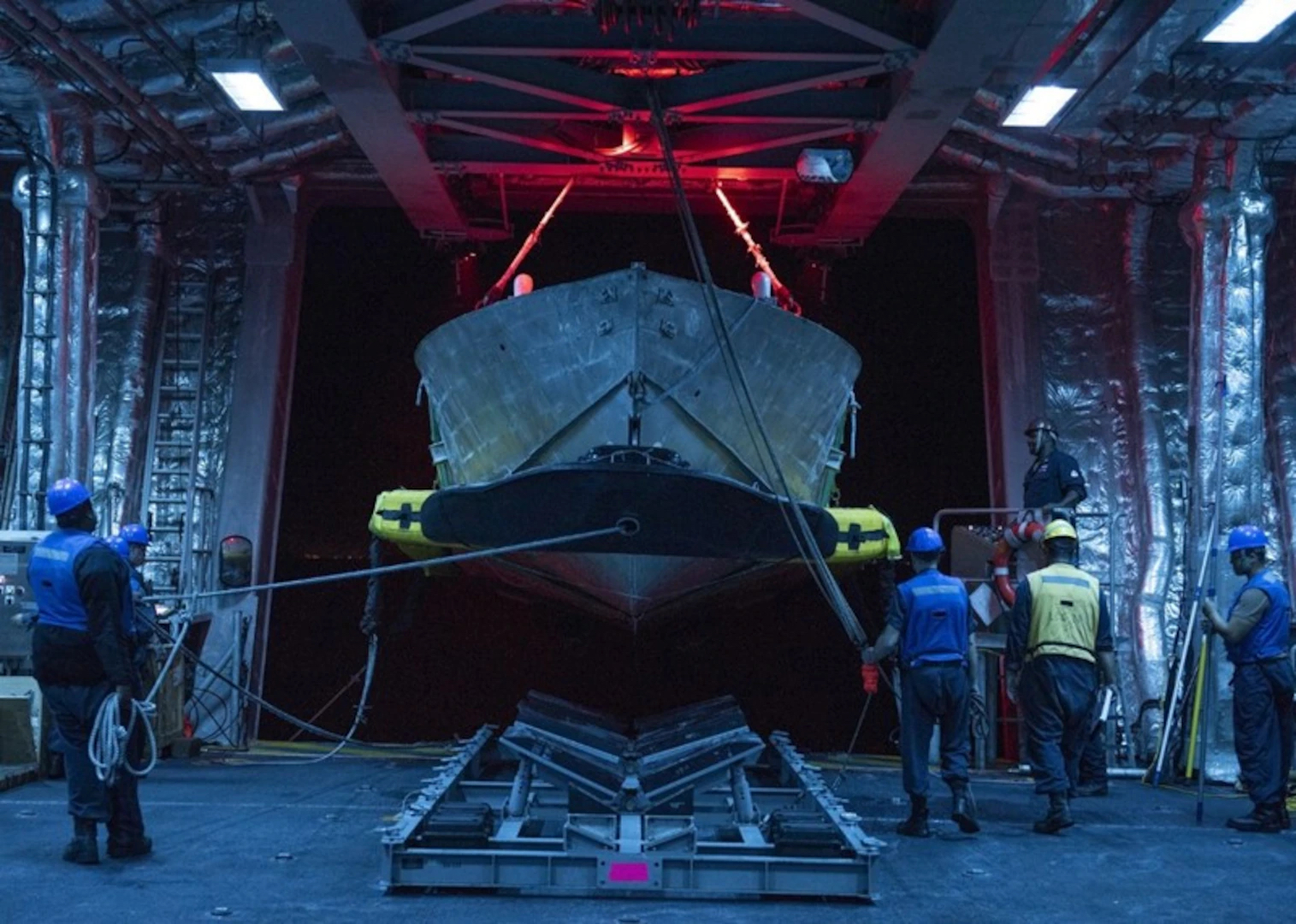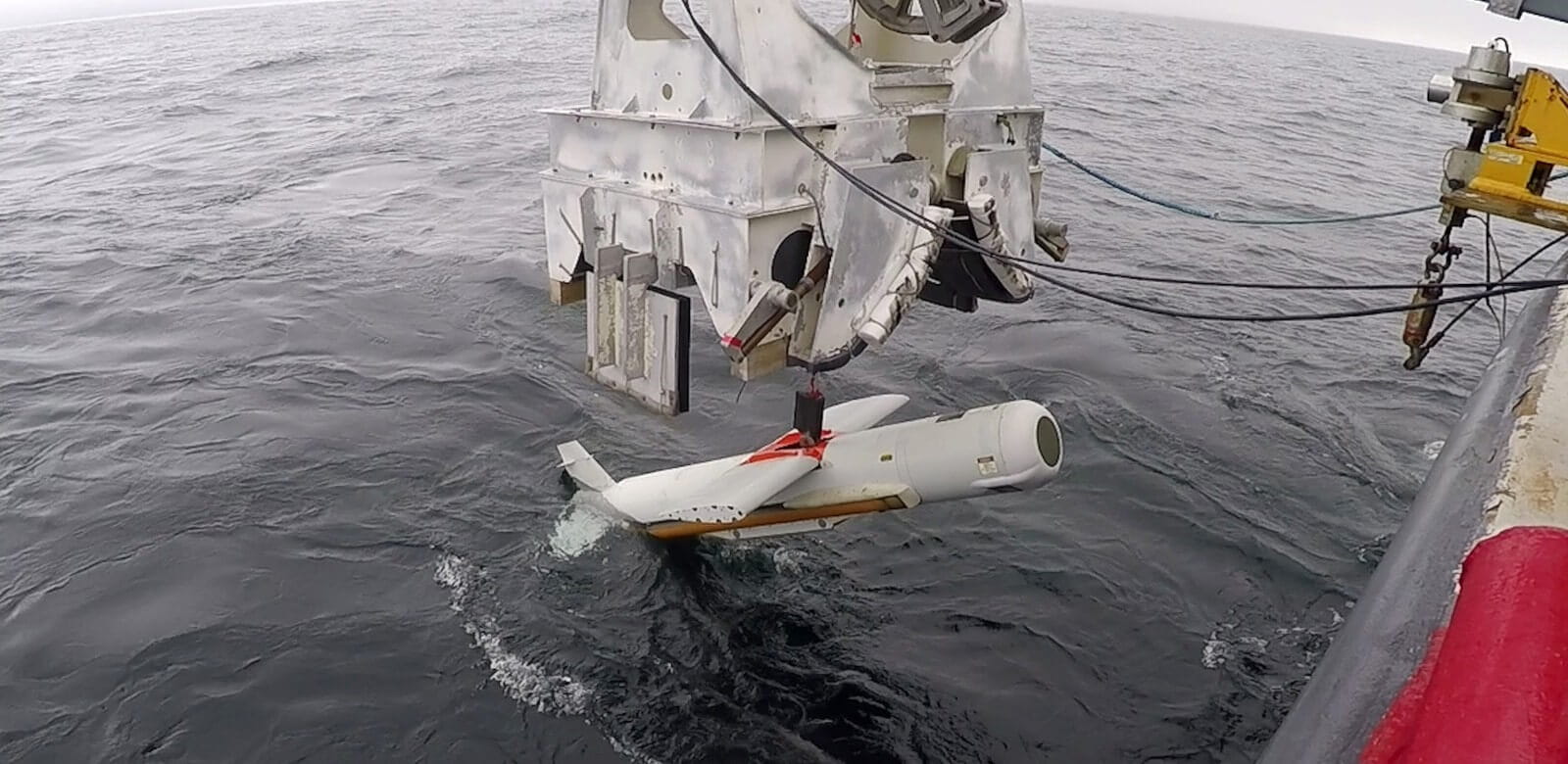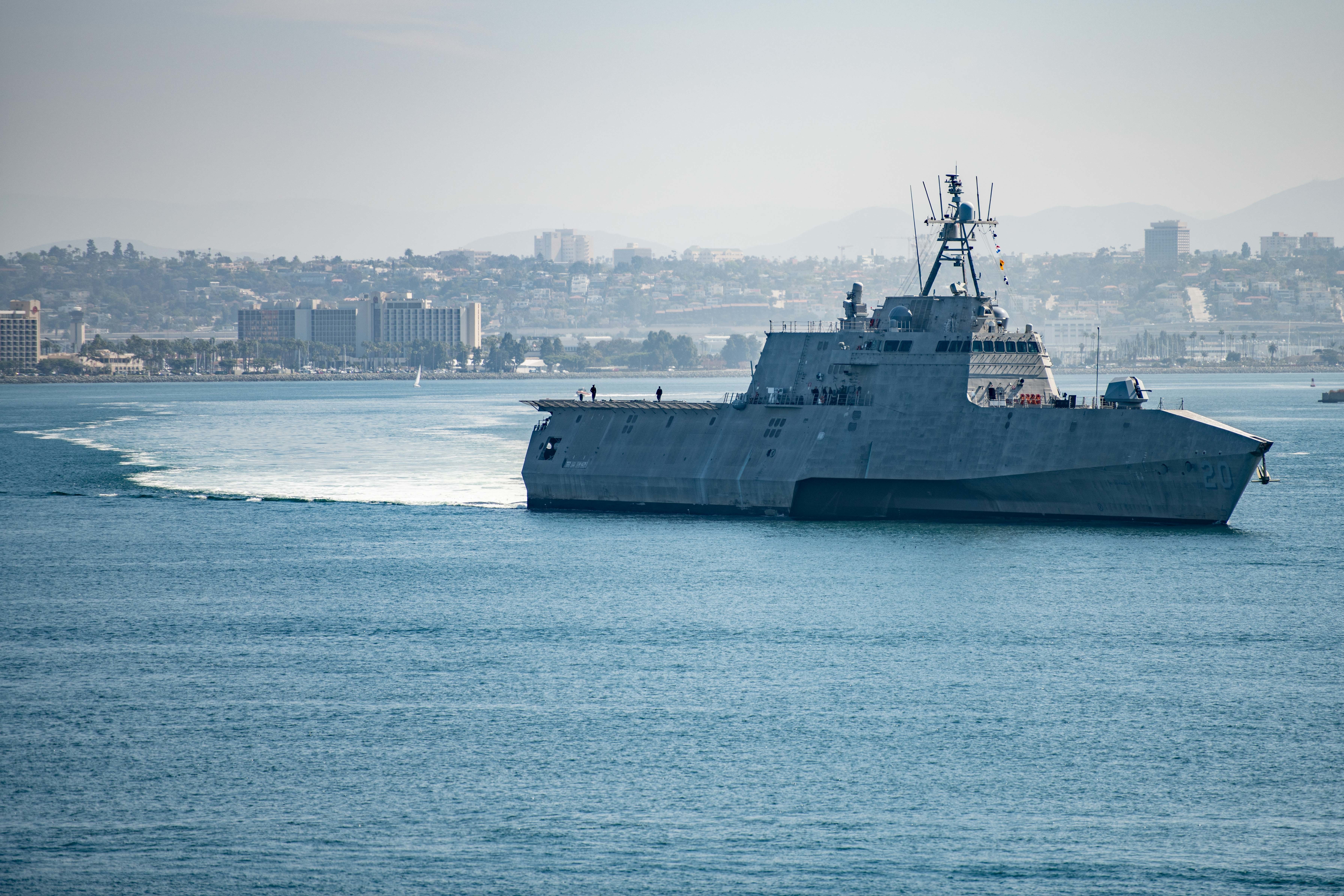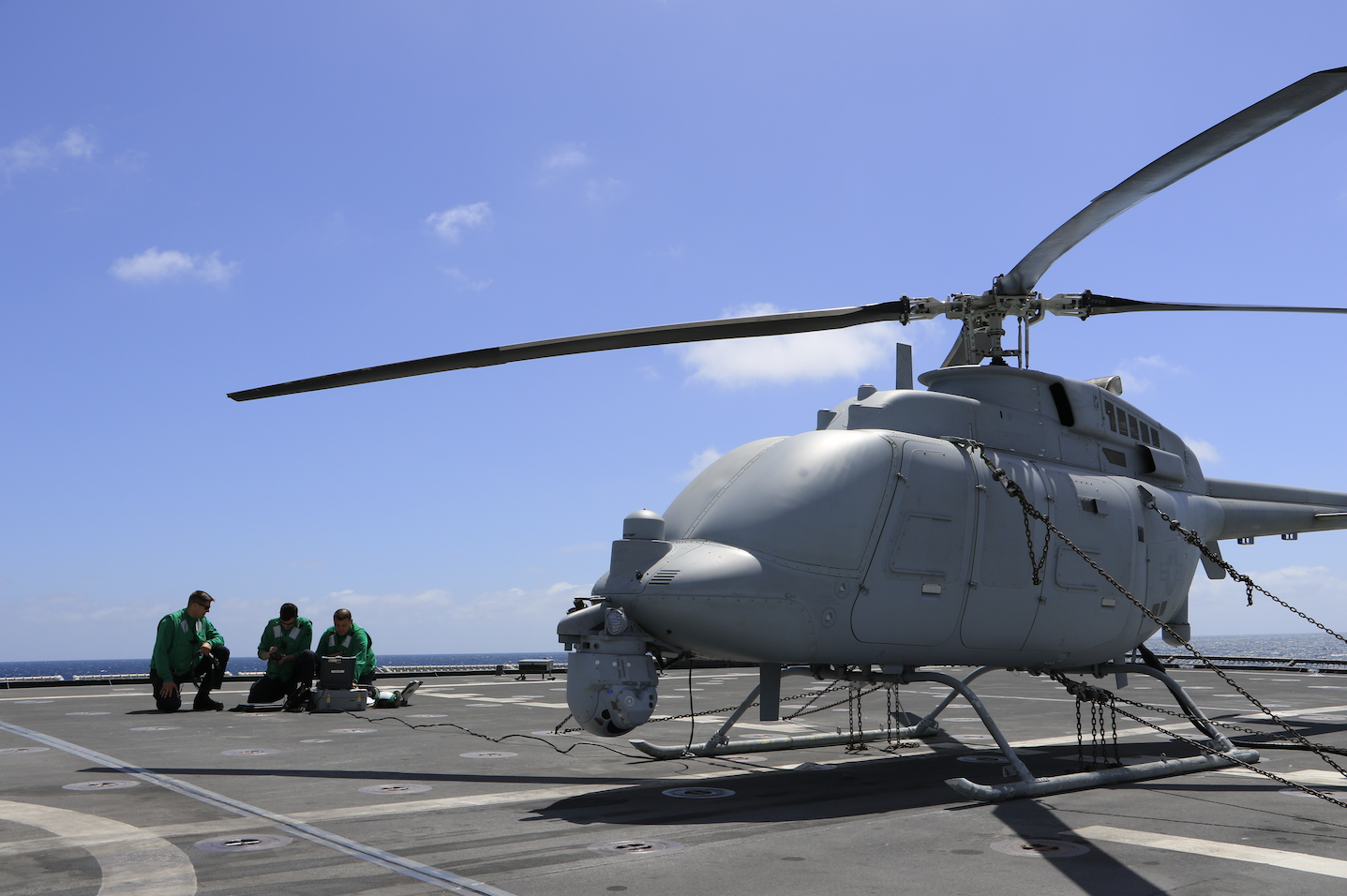
After several years of delays, the Navy’s mine countermeasures mission package for the Littoral Combat Ship has finally reached its initial operating capability.
Last year, the Navy tested the mission package and its systems aboard Independence-class LCS USS Cincinnati (LCS-20), leading the service to announce last week that the MCM mission package achieved the IOC milestone.
The mission package includes unmanned aviation and surface systems, like the Airborne Laser Mine Detection System (ALMDS) and the Airborne Mine Neutralization System (AMNS) for aviation. The mine countermeasures unmanned surface vehicle includes modular payloads that can perform both the mine hunting mission, which employs a towed sonar, and the sweeping mission, performed by the Unmanned Influence Sweep System (UISS) that achieved IOC last year. For the hunting mission, the Navy uses Raytheon’s AN/AQS-20C mine hunting sonar.

Asked about the delays to the mission package IOC, Rear Adm. Casey Moton, the program executive officer for unmanned and small combatants, noted the Navy had to change course after realizing the original remote mine hunting system did not have the reliability the service needed. The Navy instead opted to use unmanned surface vehicles. The first version of the package was supposed to IOC in 2015.
Since then, the LCS Mission Modules program office, or PMS 420, has been “starting over with the truck for the sonar, so getting the USV designed, built, tested, long testing, platform integration with the ship, launch and recovery,” Moton told reporters Thursday.
“And then also with the USV itself, it has modular payloads and each of those payloads had to be tests – the sweep system and then also the sonar towing system – just really to get those components of that package ready. And that was certainly a long process. There were challenges. Overall we’ve proceeded well throughout it.”

Since making the changes, Moton said the new mission package includes the new truck, a better version of the AN/AQS-20C mine hunting sonar, and the fielded sweep system.
During the initial operational testing and evaluation period, the Navy incorporated the Mk-18 Knifefish Unmanned Undersea Vehicle, which was not part of the original plans for testing. Moton described the tests as a way for the Navy to see how LCS would integrate with a Block 0 Knifefish. He noted the Navy has paused Knifefish procurement while it tests the first block.
For the IOT&E testing, Moton said Cincinnati’s crew operated the mission package “against a simulated minefield to achieve required mission objectives, including maintenance, pre and post-mission system prep, post-mission data analysis, in-mission command and control and launch and recovery.”
The Navy’s goal is to get the Independence-class LCSs with the MCM mission package to Bahrain in U.S. Central Command by 2025, officials have said. Moton on Thursday emphasized that the Navy is planning for a first deployment for the MCM mission package in 2025, but would not say where that might be. Officials have said the Navy envisions the LCS operating as a “mothership” for unmanned platforms, given that it can accommodate the MQ-8C Firescout, USV and UUV systems.
Last year’s testing featured engineering development models configured like the systems the Navy plans to procure for the production phase, Moton said. The service tested the MCM mission package in a variety of conditions.

“We completed approximately 230 hours of MCM USV mine hunt operations, over 33 missions from the host LCS as well as from a shore-based command center to fully asses the sonar’s performance. We executed a total of 12 airborne sorties, with fielded ALMDS and AMNS systems demonstrating the full integration with the MCM mission package,” Moton said.
“We executed the first-ever dual USV operations from a host ship for the U.S. Navy with simultaneous USV sweep and hunt electrooptical identification missions, demonstrating command and control with real time data feedback to ship operators,” he continued. “We demonstrated simultaneous command and control of three offboard systems, including two USVs – mine hunting and UISS – and one UUV, Knifefish. We demonstrated 16 full launch and recovery iterations in the MCM mission package IOT&E.”





